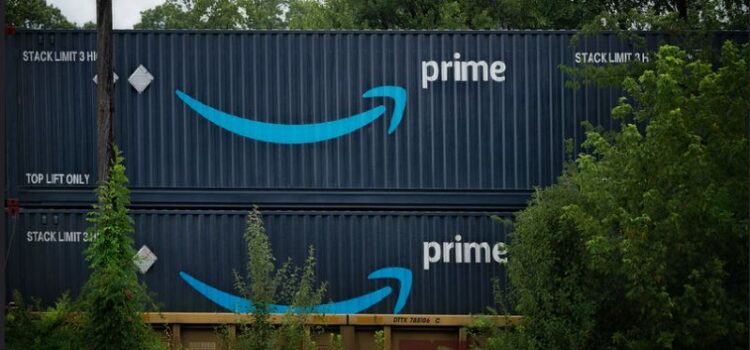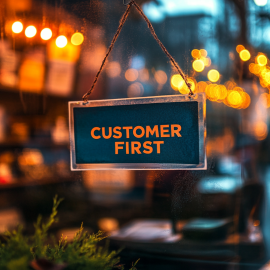

This article is an excerpt from the Shortform book guide to "Invent and Wander" by Jeff Bezos. Shortform has the world's best summaries and analyses of books you should be reading.
Like this article? Sign up for a free trial here.
How important is innovation at Amazon? What are Amazon’s most successful services?
The biggest gambles requiring the most judgment revolve around some form of innovation. Jeff Bezos places innovation at the core of Amazon’s identity and culture.
Learn more about innovation’s crucial role in keeping Amazon fresh and energized.
The Will to Innovate
Innovation at Amazon is one of Bezos’s biggest priorities. Bezos’s central business philosophy is that no matter how established your company is, you should always act as if it’s a startup. The alternative is complacency and stagnation, whereas a startup mentality brings energy and a gung-ho attitude to stay ahead. This doesn’t just apply to the boss, but to every employee, because the next innovative insight could come from anywhere in the organization. For example, Bezos writes that Amazon Prime, which paid for itself by the sheer volume of business it generated, was first suggested by a low-level programmer. For this reason, all employees must be empowered to think for themselves and come up with risky ideas. If not, they may quit and innovate for your competitors instead.
(Shortform note: While Bezos celebrates the fact that innovative ideas can come from anyone, he doesn’t describe the process by which new concepts are brought forward. However, in Creativity, Inc., Ed Catmull details the steps and hurdles to do the same thing at Pixar. Catmull acknowledges that many employees are uncomfortable giving feedback or suggesting ideas, so managers have to send the clear message that innovative ideas that fail are tools for learning and won’t result in negative reprisals. Unproven ideas are often risky, but Catmull says that nurturing them to fruition requires focusing on what makes them exciting and working through the problems as they crop up.)
When innovating, Bezos says that it’s important to keep ahead of sweeping industry trends, such as the development of artificial intelligence, but it’s equally important to be so aware of customers’ needs that you can guess what they want before they know it. This involves a process that Bezos calls “wandering”—inventing new products and services with only a vague notion of whether they’ll be successful. This process of trial and error isn’t as haphazard as it sounds, but it’s driven by Amazon’s employees’ insights about how customers engage with the world and what potential innovations might create opportunities for Amazon and its users.
(Shortform note: A famous practitioner of Bezos’s forward-looking innovation style was Steve Jobs, cofounder of Apple Computers. In Isaacson’s biography of Jobs, he comments that under Jobs’s leadership, Apple rarely did market research, since Jobs was convinced that the market didn’t know yet that it needed the new products he was pushing. This proved true for such game-changing innovations as the iPod music player and the iPhone, though not all of Jobs’s products turned out to be winners, most notably the NeXT academic computer station, which was an unmitigated flop.)
The Value of Failure
Of course, not every innovation will work and failure is to be expected. Bezos differentiates between bad failure, such as poor customer service, and good failure which comes from taking potentially profitable risks. The goal with any experiment is to fail as quickly as possible so you can learn what doesn’t work, correct it, and do better. For instance, Amazon’s successful Marketplace program grew out of two earlier failed attempts to bring third-party partners into Amazon’s platform. When a company grows as large as Amazon has, Bezos insists that it has to fail bigger too, or else it isn’t challenging itself hard enough. With the resources at Amazon’s disposal, Bezos expects it to experiment and fail in new, astonishing, billion-dollar ways.
(Shortform note: Bezos’s principle of “failing as soon as possible” is applicable to any business, especially new ones. In The Lean Startup, Eric Ries presents a systematic way to go about it, based on the premise that a brand-new business doesn’t know what its customers want or how they’ll use it. Therefore, Ries describes business practices like a scientific experiment—start with a hypothesis about how customers will relate to your product (based on the most minimal version of it you can make), test your product’s performance in the market, then learn what you can from what you’ve done so far and make any changes that your data shows are needed.)
Forging Ahead
The next economic hurdle Amazon faced was the Great Recession of 2008. During this downturn and the decade after, Amazon held its course and continued to grow. Bezos highlights three of Amazon’s business innovations that blossomed into permanent, successful programs that have shaped Amazon’s character in the 21st century—Marketplace, Prime, and Amazon Web Services—while explaining how Amazon faced the Covid crisis and continues to flourish in the shifting online economy.
Business Innovations
Launched in 2000, Amazon Marketplace grew out of attempts to host third-party vendors on Amazon’s platform. In its early years, Amazon partnered with other sellers so customers could access goods that Amazon itself didn’t keep in stock. After trying business models that separated outside vendors’ products from Amazon’s offerings, Amazon Marketplace placed third-party merchandise side-by-side with Amazon’s products. Rather than diminishing Amazon’s profits, Bezos argues that Marketplace is a win for all participants. It encourages healthy competition that results in better deals for customers while allowing Amazon’s partners access to a global distribution network that they never could have built themselves.
(Shortform note: Though Bezos presents Amazon Marketplace as a panacea for customers and third-party sellers, not everyone agrees with his assessment. In 2023, the US Federal Trade Commission (FTC) filed a lawsuit alleging that Amazon has built an illegal monopoly that prevents third-party sellers from offering lower prices, coerces vendors into using Amazon’s fulfillment service, and overcharges businesses who have no choice but to sell through Amazon. Amazon responded that the FTC’s lawsuit mischaracterizes Amazon’s relationship with third-party sellers and that it could result in higher prices and slower deliveries for consumers.)
Another risky venture was Amazon Prime, a customer loyalty program that coupled discounts with free shipping on most items. From its conception in 2005, the initial financial projections for Prime suggested it might be a financial boondoggle, and Bezos admits that Prime was risky because if it failed, it would be hard to roll back without incurring customer resentment. Instead, Prime was a smashing success. It turned out that customers were eager to pay an annual premium for the convenience it offered, as well as its added perks such as rapid delivery and streaming video. For many users, Prime made ordering online preferable to shopping in stores.
(Shortform note: Financial analysts who break down the consumer cost of Amazon Prime agree that it represents a bargain, depending on how you make use of the service. If used primarily for its free shipping aspect, you would have to order enough packages per year to recoup the annual membership fee in saved shipping costs. If used for its digital streaming aspects, its pricing is comparable to that of competitors such as Netflix and Disney. However, Amazon Prime’s critics point out that its selection is limited, its rapid delivery service is harmful to the environment, and its discounts and ease of use may promote irresponsible impulse buying.)
Amazon’s third major innovation is completely separate from its retail identity. Initiated in 2006, Amazon Web Services (AWS) provides on-demand cloud computing tools that businesses can access on a pay-per-use basis. Bezos explains that AWS grew out of Amazon’s attempts to solve its own computing problems. Once the company’s software team designed the digital tools they needed, they realized that other companies would need them as well. The first AWS customers were small business start-ups that couldn’t afford their own IT departments, but soon, even large corporations turned to AWS to save costs. Though AWS started as a sort of side hustle, it now represents a significant pillar of Amazon’s standing as an economic giant.
(Shortform note: Whether knowingly or not, when starting AWS, Bezos followed a practice articulated in 1985 by management expert Peter Drucker. In The Essential Drucker, he explains that when an established company is experimenting with a new type of business venture, it should create the new program as a separate entity and treat it as a startup rather than an expansion of the existing enterprise. If the side venture succeeds, it can then be brought under the company’s larger umbrella, and if it fails, its negative returns won’t impact the success of the parent business.)
Crisis and Competition
In 2020, the Covid pandemic drove home how important Amazon is to its customers. Online retail let people order basic necessities without risking exposure from in-person shopping. However, Bezos says that unlike the normal increase in business that comes with holiday shopping, the surge of online ordering during the Covid lockdown caught Amazon off guard. The company hired almost 200,000 new workers prioritizing delivery of essential goods. Amazon’s Marketplace worked to clamp down on third-party vendors engaged in price gouging, while AWS provided cloud computing to government agencies, medical researchers, and emergency call centers, as well as schools and businesses that had to rapidly switch to online work.
(Shortform note: As people turned to online ordering during the lockdown, Amazon prospered while other retailers struggled. However, because Amazon workers were deemed essential and remained in the workplace with little access to clear health and safety information, the pandemic had an unexpected side-effect—the unionization of Amazon’s workforce. Workers came together online to speak up about workplace safety concerns and organized strikes to demand better working conditions and stronger safety measures. Amazon responded with anti-union pressure, but its workers’ attempts to organize have been upheld by US labor officials.)
While Amazon took the lead in online retail, its success didn’t crush its competition—instead, Amazon changed the nature of retail and created new markets for other businesses to pursue. Major competitors like Walmart have now moved into online retail while offering services that Amazon can’t, such as curbside order pickup. By normalizing at-home delivery, Amazon created an avenue for companies such as Instacart that let grocery stores become online vendors. Bezos insists that he isn’t dismayed by the increasingly crowded online marketplace because he doesn’t believe that the competition detracts from Amazon’s value. Rather, the online retail market is still growing, as is Amazon’s overall share.
(Shortform note: Despite Bezos’s statements welcoming competition, Amazon and its chief rival Walmart are racing neck-and-neck to be the US’s top retail business. In 2023, Walmart outpaced Amazon in revenue ($573 billion to $514 billion), business innovation, and environmental sustainability, while Amazon ranked higher in customer service and digital sales. Though Amazon long ago eclipsed eBay in terms of revenue and volume, eBay still remains competitive as an outlet for third-party sellers to find a customer base. Meanwhile, Amazon’s up-and-coming overseas competitor Alibaba is dominating in some global sectors, specifically the Chinese market, and has more active users worldwide.)

———End of Preview———
Like what you just read? Read the rest of the world's best book summary and analysis of Jeff Bezos's "Invent and Wander" at Shortform.
Here's what you'll find in our full Invent and Wander summary:
- A compilation of Jeff Bezos’s letters to Amazon shareholders, interviews, and speeches
- How Amazon rose from a niche retailer to a digital superstore
- Bezos’s values and insights into innovation and success






